Thanksgiving 2017 - Mystery Engine Issue
Added 12/2017 - Approx 1300 hoursTime is like a runaway freight train these days and suddenly I found myself at Thanksgiving season here in Wisconsin. While we've had an extraordinary run of good weather here again this fall (as I write this on 12/3 it's 48F out, but turning bad later tonight), it's becoming more common to see days drenched in grey skies, with plenty of low and high altitiude winds affecting our flying. But Thanksgiving day we caught a big break, which made our plans to travel to the North Milwaukee area to visit family, a lot more enjoyable. By car we spend nearly 4 hours, each direction, making any "down and back in one day" trip a painful experience, where there is more time spent in the car than there is with the people we go to see. But by air, it's a simple 1.25 hour flight, depending on the winds. With this break in the weather, we booked a car out of KMWC and planned to do it all by air.
We didn't want to inconvenience anyone with the care of our dog, so we stuck on his Mutt Muffs and loaded him in the plane too. We have a special table-like board that has a seat cushion on it that lays over the tunnel and has a couple of legs to stabilize it, allowing the dog to lay comfortbly in the middle, of course also sprawling over the passengers as dogs tend to do. He does really well on our flights, and loves to go anywhere we do.
Looking at the foreflight screenshot below, you can see that there was plenty of traffic in the Minneapolis area, so today was definitely going to be a day where people got to use their airplanes for travel. Incidentally, this may be one of the last foreflight screenshots that I post. Their lack of any sort of Family plan is driving my cost up considerably for that product, whereas my WingX, FlyQ, and Aerovie applications are fully able to be used by my wife and daughter. Foreflight is top-notch stuff, but with one kid in college and another one there soon, budget cuts have to be made, and I'd rather sacrifice an app than an airplane. WingX is still wonderful software these days, and works very well for me, but FlyQ has now made enough improvements in features and stability that it has become the "go-to" app for us when we plan x/c flights. You see, I took advantage of a black friday special long ago to get a lifetime subscription to their EFB product, and that means my wife, daughter, and myself use that app for free for the long haul. This year's black friday special brought a variety of great lifetime data options for people, and their new FlyQ EFB 3.0 version and FlyQ online are ready for prime time as well. My black friday purchase this year was their FlyQ Merlin ADS-B receiver, with included AHRS. I had been looking at Foreflight's "scout" device, to be used when I'm doing my CFI job for the loal FBO in their rental planes, but the Merlin offers a 4 hour battery, dual-channel ADS-B system, and an AHRS for gauge redundancy, and it was on the black friday sale for the same $199 price as the scout. My first couple of flights with it since receiving it show that the AHRS is actually a lot better than I figured it would be. The system syncs up with my iphone and iPad very quickly, and every time I looked at the synthetic vision display, the horizon matched up with the horizon on my Chelton system. It should make a great backup gauge system for the RV-10, should I ever need it. I have the iLevil 3AW in the RV-14, which is even better in that it adds pitot and static information and integrates with my engine monitor, but at a price 6x greater than this Merlin cost me.
Well, time to get on to the flight!
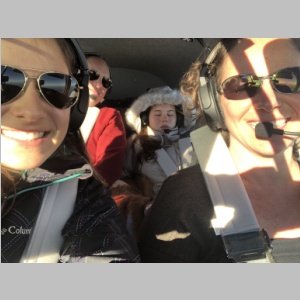 |
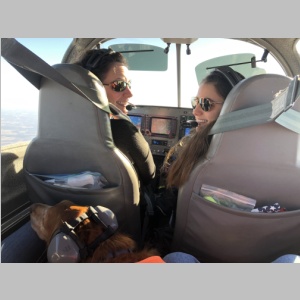 |
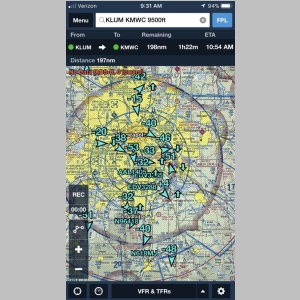 |
We didn't take much for pictures on these 2 flights, but you'll notice something a little different about the photos above. This was a trip where I spent one leg in the back seat. Andrea and Danielle did the flight down, flying in great skies with plenty of daylight. The back seat was pretty quiet, with my tired college student, Colleen, getting a good nap in. Quiet that is except for a little back-seat instructing I did. ;) I find it hard to not offer tips and advice to help make people either fly a little better, or at least better understand the "hows" and "whys" about exactly why some of these piloting rituals are done as we fly. I feel that probably nearly ALL of the students we turn out these days are vastly un-prepared for understanding exactly what they are doing for engine management, or especially troubleshooting issues. Personally, I feel the only way you will learn these skills is to either A) fly with a variety of instructors, and those instructors must have a varied background with pretty long-term skill set, or B) spend a LOT of time reading on forums or online and in books to really understand what is happening in their engines, and the effects on their engine when they move the various control levers or knobs in their plane.
This engine understanding all came to a task on the trip down to KMWC, as my sharp daughter noticed our #1 EGT seemed to be a little erratic, climing and falling maybe 20 degrees or more on a random cycle. The CHT's seemed stable at first glance, and weren't WAY off or anything, so my initial thoughts seemed to be it would end up being either a bad EGT probe, bad probe connection, or perhaps a partially plugged injector. I sat in the back seat watching the numbers myself and pondered the situation, but was also comforted in the fact that not only was the airplane in good hands, but these engines don't just disintegrate spontaneously...at least it's very very rare.
The flight down went great, and we had a real good time visiting Andrea's family. Good food, good people...you know, a real thanksgiving!
When it was time to load up for the flight home, Danielle was the pilot and we used the time to complete a long night x/c for her private certificate. We droned along in beautiful smooth and clear skies, able to see Milwaukee, Oshkosh, Madison, and the Wisconsin Dells, all at the same time out various windows. I showed her how to identify airports by their rotating beacons, and we kept focused on finding I-94 below...something that is a little comforting to have below you when you're flying x/c at night.
As we flew along, I noticed that although the CHT's were fairly stable, they definitely did not fit my normal temperature pattern on the IO-540 in N104CD. On nearly all flights in cruise, CHT 1&2 are very close, and also closely match 5&6. CHT's 3&4 are usually a little lower and also very similar to eachother. It's a benefit of hours of experience in your plane, when you know what temperature patterns you can expect. On this flight, I noticed that CHT #1 was lower than CHT's 2,5&6. That wasn't normal. So now I had an EGT that was fluctuating and a CHT on that same cylinder that was low. That pointed to a definite cylinder issue on #1. The only question was, how bad was it and what exactly was it. I could now rule out the bad EGT probe and bad probe connection, at least...but depending on the issue, it could be more expensive than if it were those options. We made it safely home and the engine sounded just fine. I only wish I had looked closer at the EGT's when we did the runup, as perhaps I would have noticed something there. I didn't, because prior to this I was expecting it to be a probe issue.
When we got back in the hangar, I downloaded the engine logs, and sent them up to SavvyAnalysis to review, and once I could see them in graph form, it was much easier to see the variations.
Notice below that even on the full flight view, you can see the ripples in EGT 1. But you also see places where CHT 1 takes some dips. The EGT and CHT both have variation from the other cylinders at various points of flight. Looking at the graphs, again, clearly something isn't right, but, I didn't exactly know what to expect. I was still thinking Injector plugging, or spark plug issue, or if something were really going nasty, maybe a valve issue.
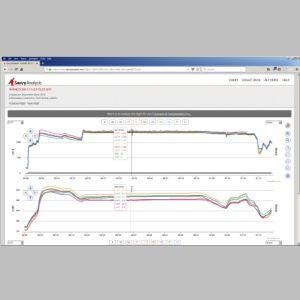 |
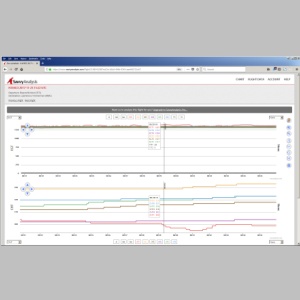 |
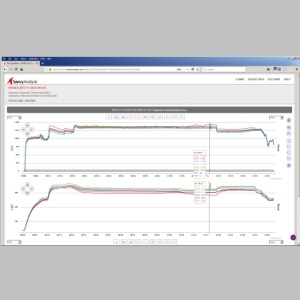 |
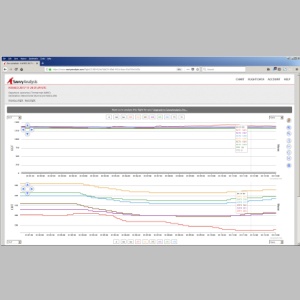 |
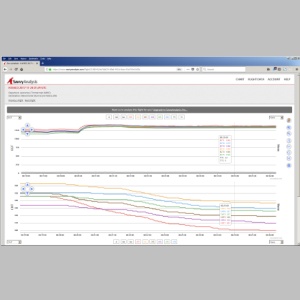 |
It took me all of 10 minutes to yank the top cowl, pull the top plug, and stick the borescope cam in and have a peek. I saw a fairly clean cylinder, with a nice dry piston top, but when I flipped the camera around to check the valves, I got my diagnosis. Looking at the bottom spark plug that was still installed, you could see it did NOT look right at all. You could tell that either something had melted or broken on the plug. With all the deposits in that area, it was hard to really see for sure what to expect, as they distracted me from the big picture. On the good side though, I had a VERY nice picture of both my intake and exhaust valves and those looked wonderful. So the expensive issues were now ruled out. A $75-80 fine-wire spark plug was probably the worst thing I'd face.
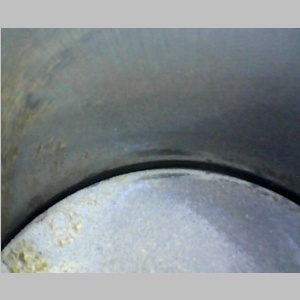 |
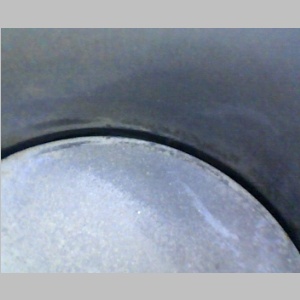 |
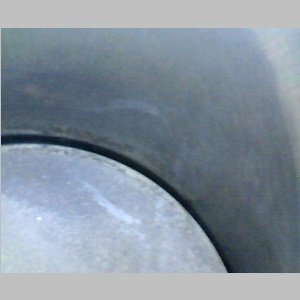 |
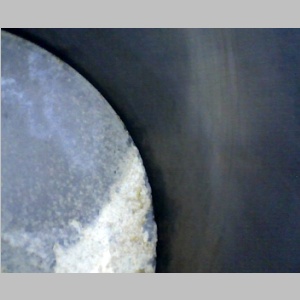 |
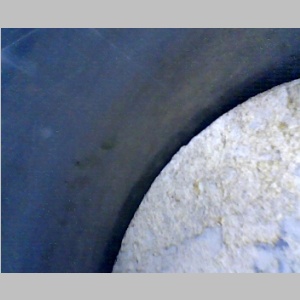 |
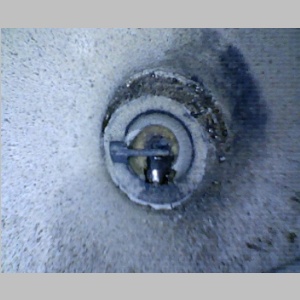 |
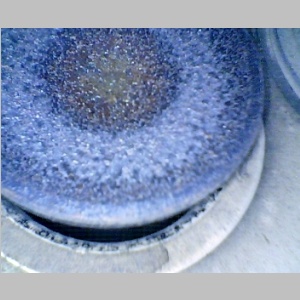 |
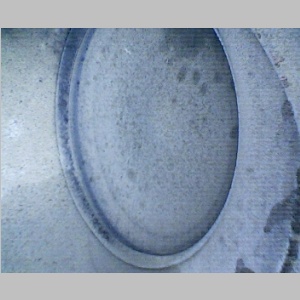 |
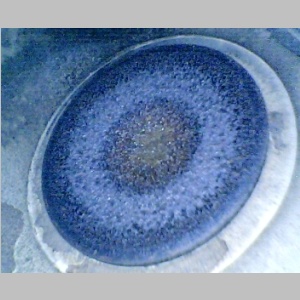 |
I pulled the bottom cowl and plug, yanked the plug, and you could see the ugliest lead-fouled booger I'd ever seen in my life! It came out easily with a pick, and the plug was easily cleaned. This is the FIRST fully fouled plug I'd ever had on the RV-10 in 1300 hours. My top plugs, with Lightspeed Ignition, have never had any fouling whatsoever. My bottom plugs, however, occasionally have gotten some lead gobs in them. The bottoms are much more susceptible to such things, as they not only have a much weaker spark, driven by a magneto, but also are inverted, acting as a little "cup" for the lead. This plug was cleaned, and returned to service, and after that the engine ran just fine with no more EGT/CHT issues.
Looking back at my logs, this did not happen on our trip to see the eclipse in August, but started some time after that. Looking at the time after that last trip, I had done some long idling periods, and flights where we did landing practices with the mixture often kept full rich throughout multiple landings. It doesn't take much time at full rich on the ground to foul a set of plugs. As a reminder to all pilots, the best thing you can do for your plugs is to do a couple of things: 1) Do the "Mixture Full Rich" landing checklist item just as you turn from Base to Final. i.e. don't fly the whole pattern or start the "full rich" segment when abeam the numbers. People may argue with me about this, and I accept your arguments as valid points, but if you want your engine to perform well, only be full-rich when also at full power. 2) as soon as you are on the ground, or, before you taxi, lean your engine as far as you can possibly lean it without it running rough and quitting. Lean it so far that if you push the throttle forward, the engine wants to die. It's when you are UNABLE to give it full power that you are doing it right. This will give you a very lean mixture for taxi, and also prevent you from accidentally taking off without going full-rich first. This has been my common practice for nearly 20 years now. I don't expect a new private student to be able to keep the pace up all the time when flying touch and go's in an RV, as things happen very quickly when you're flying patterns in an RV. But, as they progress and can handle drinking from the fire hose a bit better, it's something that be improved on to encourage good engine management at all times during a flight....from engine start, to engine shutdown. One more short paragraph below...
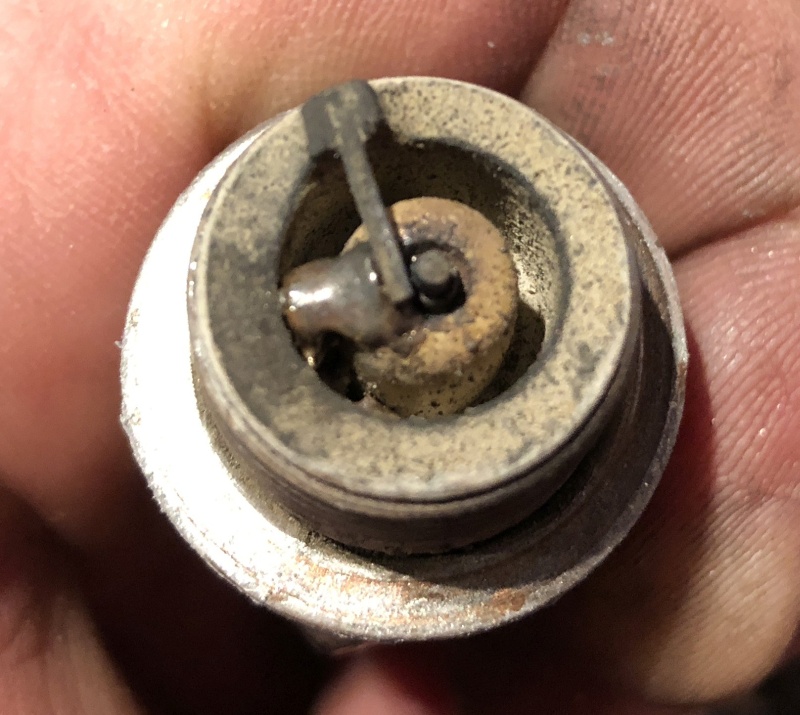
First, an engine shutdown tip: Before shutting down your engine, first run the RPM to about 1800 RPM approx. Then, drastically lean your engine until it stumbles. Watch for your EGTs to hit 1200 for a few seconds, then pull back the throttle to idle and once it's idling, mixture full cut-off. Doing this will help burn off the lead before you shut down. You have to get to 1200 degrees or so before it will help and make a difference.
Now for a pet peeve... Yes, there's a lot going on during an engine start, and yes, hot starts can be harder than cold starts. This issue happens easily during hot starts but I see it happen during cold starts as well. When you fire up and engine, none of the bearing surfaces yet have their oil film barrier to keep the engine parts from touching. Once the oil pump is operating, the film of oil prevents direct metal to metal contact. But you first have to have oil pumping. (unless you have a pre-oiler, which I sure wish I had) This means that during startup you DEFINITELY don't want to go immediately from not-running to high RPM. Advance the throttle only enough for about 1000 RPM during startup. If you advance it more, such as during a hot start when you're doing Wide-Open throttle and mixture off, you want to be very quick on the throttle lever once it fires, and get that mixture rich and throttle to idle a.s.a.p. It's just one more thing that can keep your engine intact for more hours, and these engines aren't cheap.
MyRV10.com Home | N104CD Home